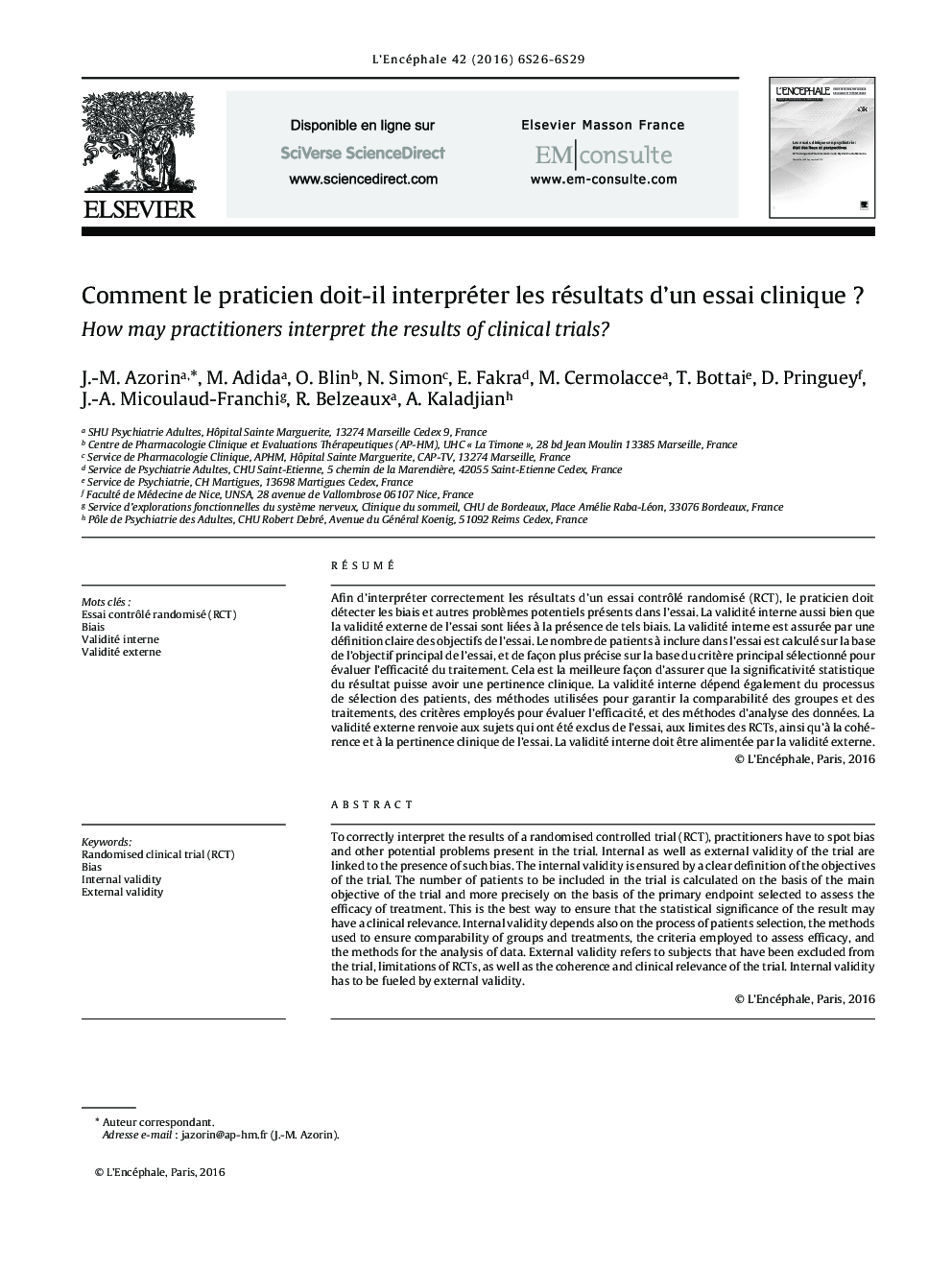| Article ID | Journal | Published Year | Pages | File Type |
|---|---|---|---|---|
| 5721327 | L'Encéphale | 2016 | 4 Pages |
Abstract
To correctly interpret the results of a randomised controlled trial (RCT), practitioners have to spot bias and other potential problems present in the trial. Internal as well as external validity of the trial are linked to the presence of such bias. The internal validity is ensured by a clear definition of the objectives of the trial. The number of patients to be included in the trial is calculated on the basis of the main objective of the trial and more precisely on the basis of the primary endpoint selected to assess the efficacy of treatment. This is the best way to ensure that the statistical significance of the result may have a clinical relevance. Internal validity depends also on the process of patients selection, the methods used to ensure comparability of groups and treatments, the criteria employed to assess efficacy, and the methods for the analysis of data. External validity refers to subjects that have been excluded from the trial, limitations of RCTs, as well as the coherence and clinical relevance of the trial. Internal validity has to be fueled by external validity.
Related Topics
Health Sciences
Medicine and Dentistry
Psychiatry and Mental Health
Authors
J.-M. Azorin, M. Adida, O. Blin, N. Simon, E. Fakra, M. Cermolacce, T. Bottai, D. Pringuey, J.-A. Micoulaud-Franchi, R. Belzeaux, A. Kaladjian,
